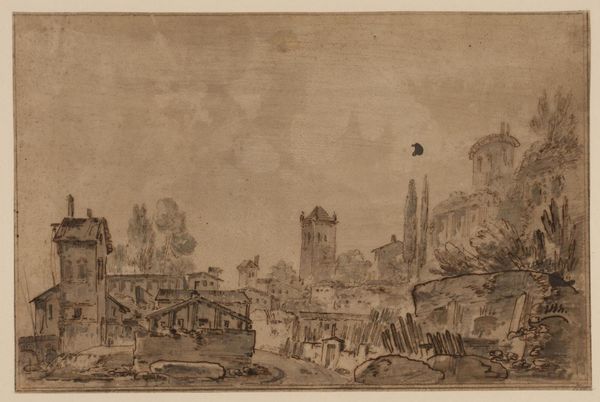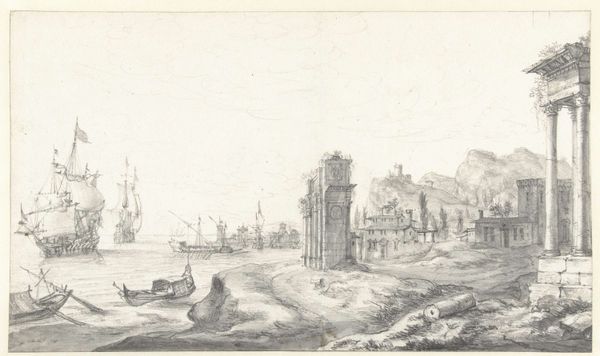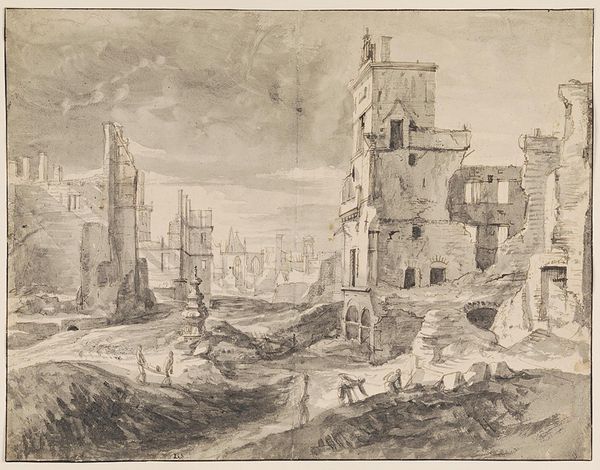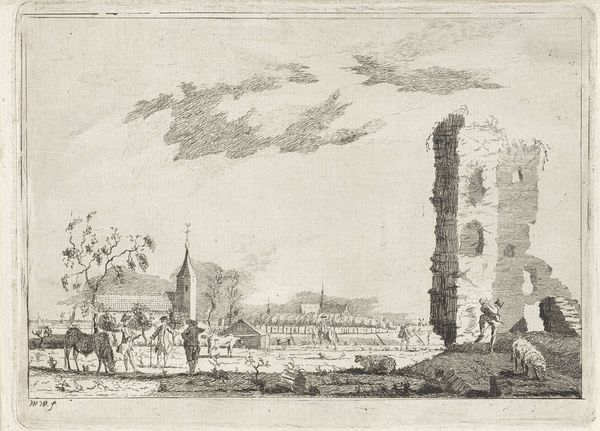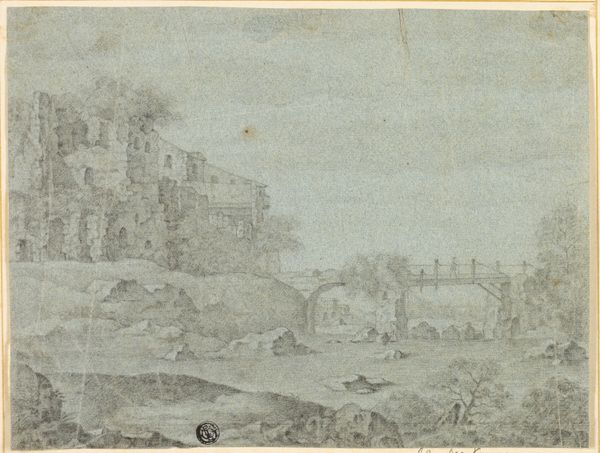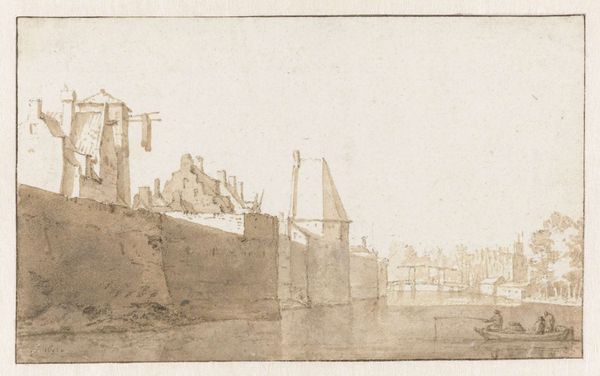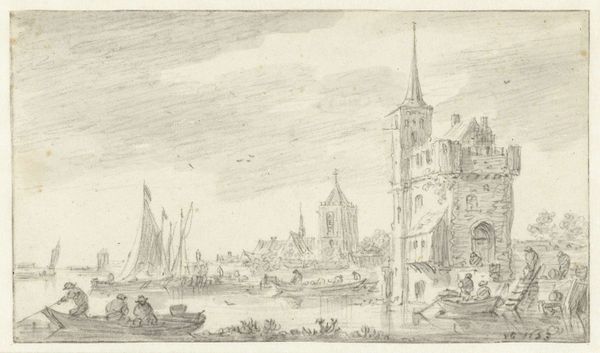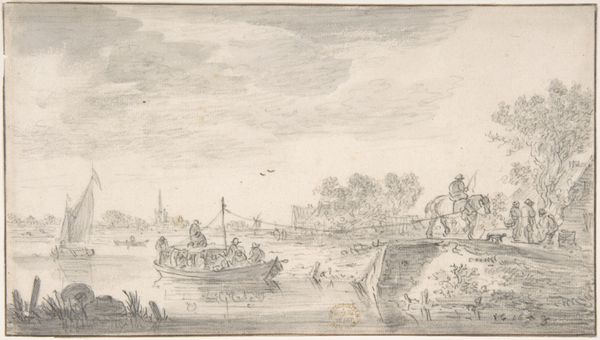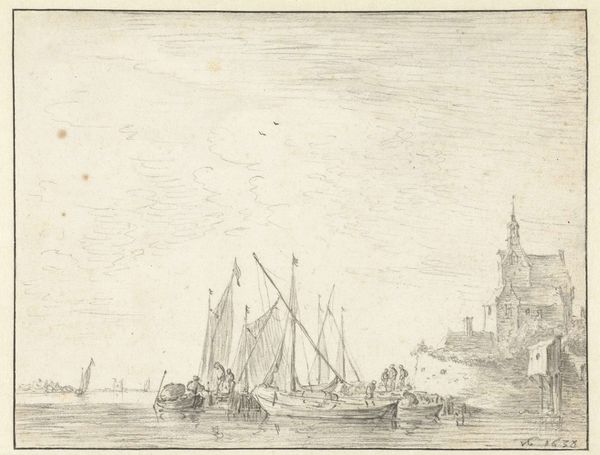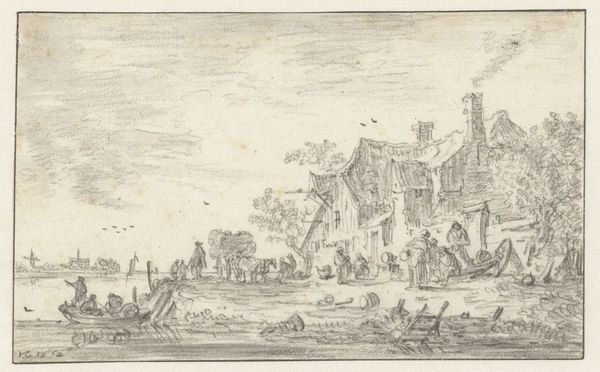
drawing, ink, pencil
#
drawing
#
toned paper
#
light pencil work
#
medieval
#
quirky sketch
#
pencil sketch
#
sketch book
#
incomplete sketchy
#
landscape
#
river
#
romanesque
#
personal sketchbook
#
ink
#
pen-ink sketch
#
pencil
#
sketchbook drawing
#
cityscape
#
sketchbook art
Dimensions: height 272 mm, width 350 mm
Copyright: Rijks Museum: Open Domain
Curator: Looking at this piece, tentatively titled "View of a River Landscape with Ruins," and created sometime between 1700 and 1886 by an unknown artist, the first thing I notice is the incredible density of lines. Editor: It has this strangely ethereal quality despite depicting ruins. It’s almost… romantic in its decay? The somber mood hangs in the air. Curator: Let's think about the materials: ink and pencil on paper. This wasn’t meant for grand display. I see a sketchbook study, maybe, evidence of the artist's labor. The quick strokes tell us this was on-site work. How does that immediacy impact your perception? Editor: It feels profoundly intimate. This wasn't just about capturing scenery, it was about encountering it. I imagine the artist grappling with themes of power, how structures crumble and the narratives embedded in those very stones shift across generations. Who built those ruins? Who labors amongst them now? Curator: Excellent questions. Consider also how ruins frequently feature in landscape art across centuries. They signify time, but what kind of time? For whom does time unfold, and who's erased from history? These were typically commissioned by wealthy patrons, showcasing not only aesthetics but also the privilege of viewing these landscapes. Editor: Absolutely, and in whose service do these ruins persist as picturesque scenery? I keep thinking of cycles: construction, destruction, representation, and the exploitation inherent within it all. Are these workers mere background, props in someone else's pretty picture? Curator: Precisely. Even the paper itself plays a part. This isn’t fine vellum, it appears to be toned. The quality and availability of art supplies dictate what could be made and by whom. Was this paper chosen deliberately for its color to create a certain depth, a visual richness despite its sketch-like nature? Editor: That depth makes me think about the distance between us and those portrayed: socially, temporally. What did this river mean to them? For transport, industry, life itself. Do we romanticize this view at the expense of lived realities? I feel there's tension, unresolved stories swirling in the wash of ink. Curator: A powerful interpretation. Considering these details allows a much more layered engagement than just appreciating 'pretty ruins.' Editor: I'm leaving with a sense of questioning. That a simple drawing can hold such complex dialogues across centuries—that's remarkable.
Comments
No comments
Be the first to comment and join the conversation on the ultimate creative platform.
